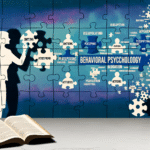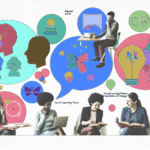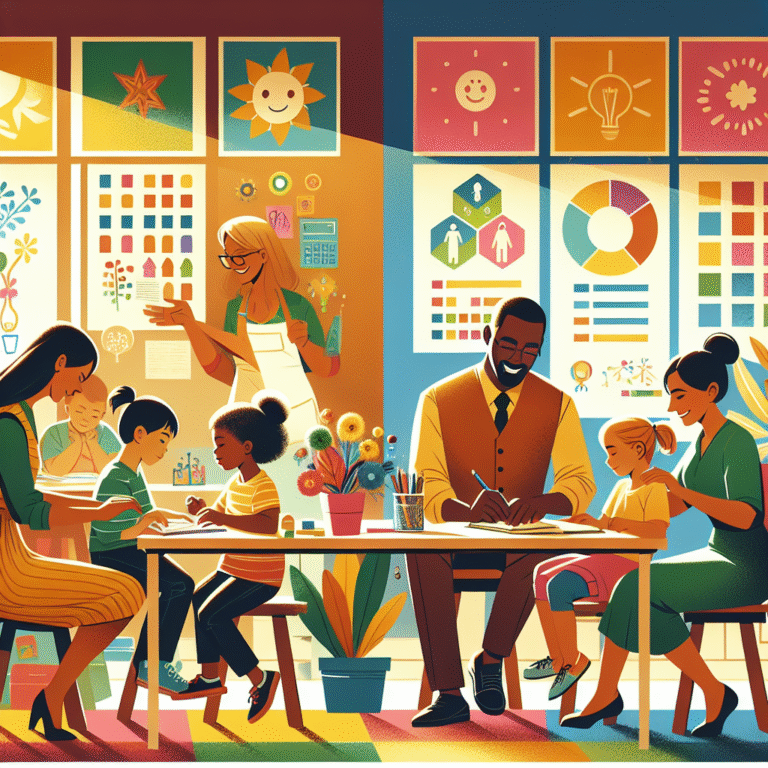
Introduction
Imagine this: a community bustling with ideas, each individual bursting with enthusiasm and potential. Yet, amid this excitement, a critical question arises—how do we turn these ideas into tangible actions that foster real change? As communities strive to address complex challenges, the answer often lies in collaborative consultation. From Ideas to Action: The Impact of Collaborative Consultation in Community Projects not only brings voices together but also serves as a catalyst for transformation. This article will explore how collaborative consultation can empower communities, providing unique insights, actionable strategies, and inspiring case studies that resonate with the essence of collective action.
The Essence of Collaborative Consultation
What Is Collaborative Consultation?
Collaborative consultation is a process that facilitates dialogue among varied stakeholders—community members, local organizations, government entities, and even private sectors. The core premise is simple: bringing diverse perspectives to the table spurs innovative solutions, leading to more sustainable outcomes.
The Importance of Collaboration
Why is collaboration vital? Simply put, no one has all the answers. When communities unite, they benefit from shared knowledge and resources. This leads to multifaceted solutions that might not emerge from an isolated approach. According to a study published in the Journal of Community Engagement and Scholarship, communities that employ collaborative approaches experience a significant boost in engagement, as shown in the following table.
| Key Metrics | Collaborative Projects | Traditional Projects |
|---|---|---|
| Stakeholder Engagement Rate | 85% | 45% |
| Project Completion Time | 30% faster | N/A |
| Satisfaction Among Participants | 90% | 60% |
This data underscores the vital role collaborative consultation plays in enhancing community engagement and satisfaction.
From Ideation to Implementation
The Collaborative Process: Phases and Best Practices
Transitioning from ideas to actionable plans involves structured phases:
Ideation Phase: Gather perspectives using brainstorming sessions. The goal is to create a safe space where every voice is valued.
Assessment Phase: Identify community needs through surveys or focus groups. Prioritize ideas based on feasibility and impact.
Planning Phase: Develop a clear action plan that outlines responsibilities, timelines, and resources required.
Implementation Phase: Execute the plan, ensuring constant communication with all stakeholders to maintain engagement and adaptability.
- Evaluation Phase: Assess outcomes and gather feedback to refine processes for future initiatives.
Case Study: The Green Neighborhood Initiative
The Green Neighborhood Initiative (GNI) in Springfield serves as a hallmark example of collaborative consultation. Launched to address urban pollution, GNI implemented a series of workshops to solicit community input. The result? A community-driven project that incorporated green spaces, tree planting, and local gardens.
Analysis of GNI
The success of GNI can be attributed to its inclusive consultation process. Community members felt a sense of ownership, which not only enhanced participation but also increased trust among stakeholders. The outcome was a significant improvement in local air quality, showcasing the power of collaborative efforts.
Challenges in Collaborative Consultation
Identifying Barriers
While the benefits are profound, challenges often accompany collaborative consultation:
- Diverse Opinions: Reconciling differing views can lead to conflict.
- Resource Constraints: Limited funding or time can hamper progress.
- Communication Gaps: Misunderstanding can occur if there’s inadequate information-sharing.
Developing Strategies to Overcome Challenges
Facilitated Dialogue: Employ neutral facilitators to guide discussions and address conflicts.
Resource Pooling: Encourage stakeholders to contribute resources or collaborate on fundraising efforts.
- Transparent Communication: Use multiple channels (social media, newsletters, community boards) to disseminate information clearly.
Success Stories: The Impact of Collaborative Consultation
Case Study: The Youth Empowerment Program
In Portland, the Youth Empowerment Program (YEP) harnessed collaborative consultation to address youth unemployment. By engaging local businesses, non-profits, and youth, they created job-training workshops.
Analysis of YEP
YEP not only provided job skills but also fostered mentorship opportunities. This program led to a 60% employment rate among participants, illustrating how collaboration can produce tangible outcomes that reshape lives.
Case Study: The Inclusive City Project
Another standout case is The Inclusive City Project in New York, which aimed to enhance public spaces for individuals with disabilities. The project brought together community members, architects, and city officials to create accessible designs.
Analysis of The Inclusive City Project
By involving individuals who experienced barriers firsthand, the project identified critical flaws in existing public spaces, leading to more comprehensive urban planning that prioritizes accessibility. The success stories from The Inclusive City Project emphasize how collaborative consultation can lead to innovative societal shifts.
Measuring Impact: Metrics for Success
Key Performance Indicators (KPIs)
To evaluate the impact of collaborative consultation in community projects, consider the following KPIs:
- Engagement Levels: Measure the number and diversity of participants involved.
- Project Completion Rates: Track the timely delivery of project goals.
- Qualitative Feedback: Gather testimonials and narratives from community members.
- Sustainability of Outcomes: Assess whether the project continues to deliver value over time.
Example Table of Metrics
| Metric | Before Collaborative Consultation | After Collaborative Consultation |
|---|---|---|
| Number of Stakeholders Engaged | 50 | 200 |
| Project Completion Rate | 50% | 90% |
| Community Satisfaction Score | 65/100 | 90/100 |
This data showcases how implementing collaborative consultation elevates community outcomes significantly.
Conclusion
In an increasingly complex world, From Ideas to Action: The Impact of Collaborative Consultation in Community Projects is more relevant than ever. The potential for transformation lies in our ability to disregard silos and embrace the power of collective effort. Communities thriving on collaboration can navigate challenges more effectively and foster environments where everyone feels valued.
As we reflect on the stories shared and the strategies discussed, let us take action. Each of us has a role to play in our community, whether by initiating conversations, volunteering time, or supporting local projects. Together, we can create powerful initiatives that leave a lasting legacy for future generations.
FAQs
1. What is the main objective of collaborative consultation in community projects?
Collaborative consultation aims to engage diverse stakeholders, ensuring that multiple perspectives inform decisions and actions, leading to more comprehensive and effective solutions.
2. How can communities ensure all voices are heard during the consultation process?
Communities can implement various strategies, such as anonymous surveys, inclusion of minority groups, and skilled facilitation, to ensure everyone has a platform to share their views.
3. What are some common barriers to effective collaboration?
Common barriers include diverse opinions that may lead to conflict, limited resources, and communication gaps that can hinder progress.
4. How do we measure the success of collaborative projects?
Success can be measured through various KPIs, such as engagement levels, project completion rates, community satisfaction scores, and sustainability of outcomes.
5. Can you provide an example of a community project that successfully used collaborative consultation?
The Green Neighborhood Initiative in Springfield is a prime example. By engaging community members through workshops, they developed a green space project that improved local air quality and fostered community pride.
By turning ideas into action, we can harness the collective strength of our communities. Together, let us embark on a journey of collaboration that not only inspires change but creates a better tomorrow.














